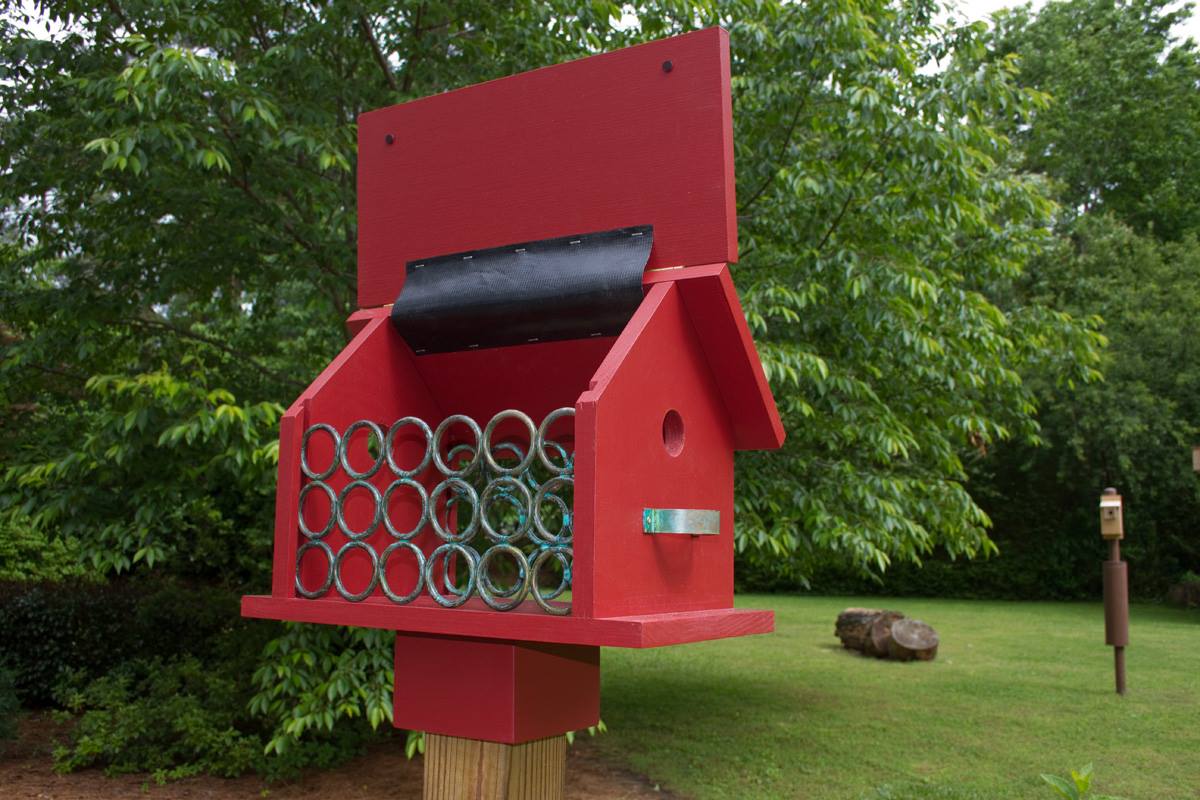02-13-2017, 05:20 AM
For the last 8-9 years wildlife photography has consumed most of my free time but I've always loved working with wood but never really took it seriously enough to "invest" in tools for a woodworking shop. I made due with what I had at the time and it got me by but being a perfectionist I'm always wanting more and trying to get better at anything I do in life.
Attracting Eastern Bluebirds to my yard is the main reason for re-sparking my interest in woodworking and developing a feeder to dispense mealworms for Bluebirds without feeding every bird in the neighborhood. After a lot of observation and research I came up with a feeder and over the years the design has changed by the idea has stayed the same....a feeder that serves a purpose and is also attractive.




Basically the idea with this feeder is to only allow birds that can fit through a 1 1/2" opening to access the mealworms and it works with a little patience and training (yes, birds can be trained). The main issue I have with this feeder design is the roof and base warp over time with changes in humidity despite using exterior latex paint.
I'm looking for advice on how to alleviate this problem I'm having. I've tried several ways of supporting the wood but nothing seems to work and over time to the wood starts curling. I have a feeling the answer is simple but I've overlooked it for last several years.
Future feeders will not be painted because the feeders I've sold that looked natural were the most popular. I've also been approached by my local Wild Birds Unlimited store to offer these for sale there but until I'm 100% confident the design is flawless and will last for years I'm not crossing that bridge yet.
Thank you in advance.
Duane
Attracting Eastern Bluebirds to my yard is the main reason for re-sparking my interest in woodworking and developing a feeder to dispense mealworms for Bluebirds without feeding every bird in the neighborhood. After a lot of observation and research I came up with a feeder and over the years the design has changed by the idea has stayed the same....a feeder that serves a purpose and is also attractive.


Basically the idea with this feeder is to only allow birds that can fit through a 1 1/2" opening to access the mealworms and it works with a little patience and training (yes, birds can be trained). The main issue I have with this feeder design is the roof and base warp over time with changes in humidity despite using exterior latex paint.
I'm looking for advice on how to alleviate this problem I'm having. I've tried several ways of supporting the wood but nothing seems to work and over time to the wood starts curling. I have a feeling the answer is simple but I've overlooked it for last several years.
Future feeders will not be painted because the feeders I've sold that looked natural were the most popular. I've also been approached by my local Wild Birds Unlimited store to offer these for sale there but until I'm 100% confident the design is flawless and will last for years I'm not crossing that bridge yet.
Thank you in advance.
Duane






![[Image: knots1.jpg]](http://2.bp.blogspot.com/-MHgpXLbgQ2I/URty8BLRysI/AAAAAAAABG0/np7yeFs93Ig/s640/knots1.jpg)
![[Image: plum-cupped.png]](http://www.wood-database.com/wp-content/uploads/plum-cupped.png)
![[Image: hickory,%20shagbark%20quartersawn%201%20...%20plh.jpg]](http://www.hobbithouseinc.com/personal/woodpics/hickory/hickory,%20shagbark%20quartersawn%201%20end%20grain%20closeup%20s25%20plh.jpg)
